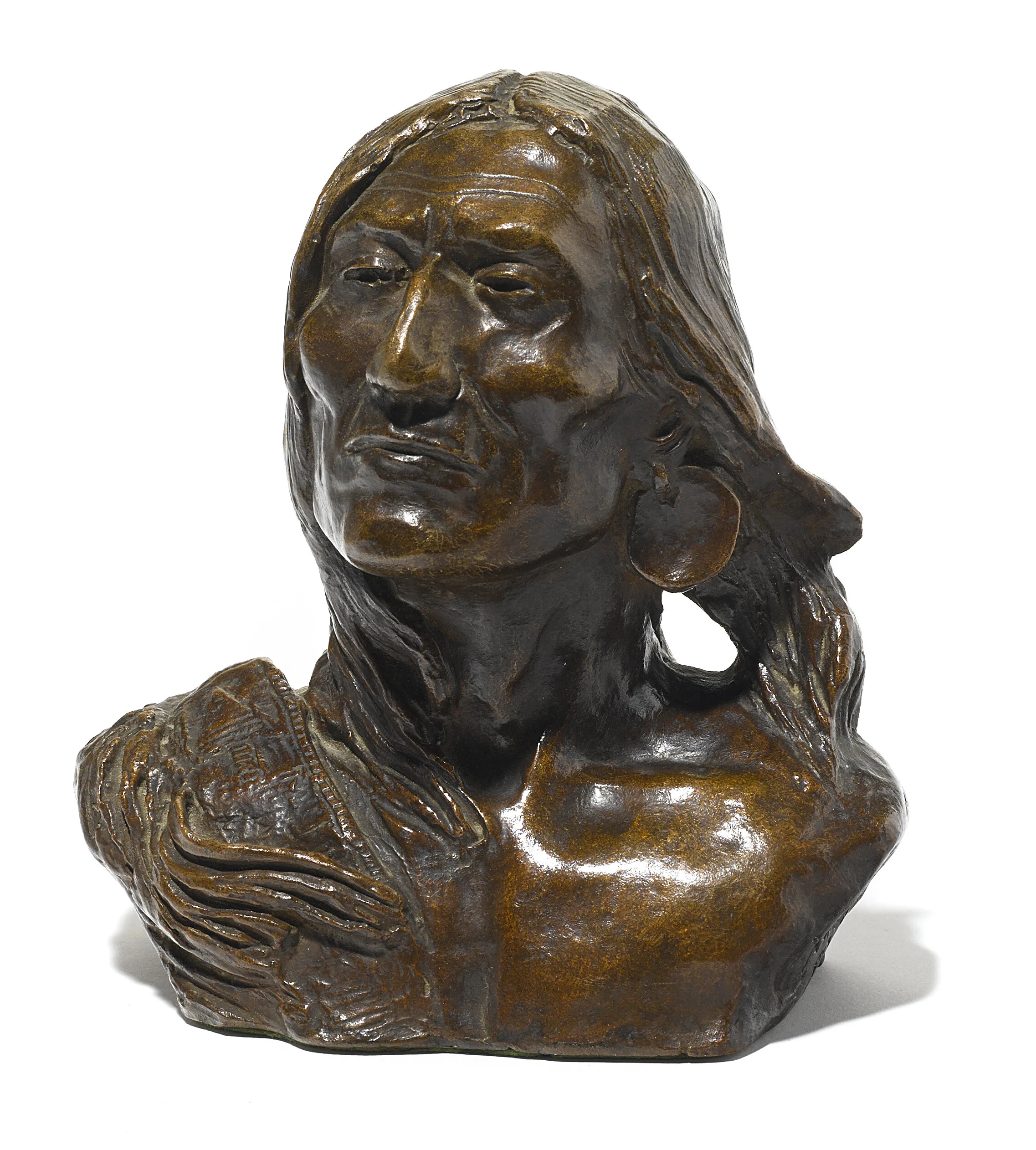Taos, New Mexico and Western Art
LiveAuctionTalk.com
Photo courtesy of Bonhams.
“In a cold like this, the stars snap like distant coyotes, beyond the moon. And you’ll see the shadows of actual coyotes, going across the alfalfa field. And the pine-trees make little noises, sudden and stealthy, as if they were walking about. And the place heaves with ghosts...” D.H. Lawrence
“For heaven’s sake tell people what we have found. Send some artists out here. There is a lifetime’s work for 20 men. Anyhow, I’m lonesome.”
The shapes and colors of the Taos, New Mexico landscape and its Native American inhabitants was a constant call to early-20th century painters, writers and sculptors like D.H. Lawrence. Nestled underneath the Sangre de Cristo Mountains, the crystal-clear sky, the pinon-scented desert air, the lightheadedness of high altitude and the brilliant sunshine all contributed to the mystique.
Taos became the home of their hearts.
The Taos Pueblo Indians trace their bloodlines to prehistory. Even in the 20th century the self-contained community remains devoted to the preservation of many of its old ways.
E. Irving Couse arrived in Taos by stagecoach for the first time in June of 1902 with his wife and 8-year-old son. His friend and fellow painter Bert Phillips greeted the family. Bert had rented a house next to his own for the new arrivals.
That was the beginning of a lifelong friendship between the two artists.
Couse is best known for his paintings of Taos Indian life. He painted them the way other people painted landscapes.
He was fascinated by their lives and customs. They were also vehicles for him to be arranged in interesting kneeling, sitting and squatting positions. Couse found his inspiration and spent the rest of his life painting Taos Indians.
The natives were comfortable posing for artists like Couse. By 1910 he had left his home in New York and purchased his own building in Taos and became one of the five founding members of The Taos Society of Artists in 1915. The artists included Bert Phillips, W. Herbert Dunton, Joseph Henry Sharp, Oscar Berninghaus, Ernest Blumenschein and Couse.
Couse painted what the public would buy and was one of the most commercial minded of all the Taos artists.
Blumenschein heard about the Indian village of Taos for the first time from Sharp where he had sketched for a couple of weeks.
“I remember being impressed, as I pigeon-holed that curious name in my memory with a hope that someday I might pass that way,” Blumenschein said.
Sharp described his visits to the different tribes and told Blumenschein if he wanted to paint Native Americans he should be sure to visit Taos Pueblo.
“For heaven’s sake tell people what we have found,” Phillips reportedly said to Blumenschein. “Send some artists out here. There is a lifetime’s work for 20 men. Anyhow, I’m lonesome.”
These artists developed a truly American form of art. Their exhibitions became the event of the year in many cities and their primary purpose was to sell their work through traveling exhibitions.
The Taos Society of Artists disbanded in 1927. It has been said the work of these artists became so popular the Society outlived its usefulness and maintaining it became a burden.
On Feb. 8, 2019, Bonhams featured the Brinkman Western Art collection on the block. Included in the sale were paintings from The Taos Society of Artists.
Here are some current values.
Taos Society of Artists
E. Irving Couse; The Knife Grinder; oil on canvas on board; signed; 16 inches by 22 inches; $12,500.
E. Irving Couse; The Ear of Corn; oil on canvas; signed; 1919; 24 ¼ inches by 29 inches; $87,500.
E. Irving Couse; Pictographs; oil on canvas; signed; 1934; 20 inches by 36 inches; $156,250.
Joseph Henry Sharp; The Peacemaker; oil on canvas; signed; 25 inches by 30 inches; $200,000.






